
Why diet matters
When it comes to your risk of stroke, some things—like your genetics—are out of your control. But your diet can have a major impact on your risk, says the American Heart Association. Eating foods high in saturated fat, trans fat, and cholesterol can raise your cholesterol. Diets high in fat and calories can lead to obesity. Too much sodium can increase your blood pressure. All these factors can put you at greater risk of having a stroke. Plus, different nutrients can also have an impact on your chances of heart problems. Here’s a look at foods you can add to your diet that are good for your heart and can help cut your risk of stroke.
Salmon
Eating non-fried seafood one or two times a week can lower your stroke risk, according to a review of studies published in the journal Circulation. Researchers say the omega-3 fats in oily fish like salmon, tuna, and mackerel reduce inflammation in the arteries, helping to improve blood flow and decrease the chance of blood clots. Eating more fish also could mean your diet contains less unhealthy fare like red meat and processed meats, which have more artery-clogging saturated fats. Aim for 8 ounces, or two servings, of non-fried seafood per week. (Here’s what you need to know about buying farm-raised vs. wild-caught salmon.)
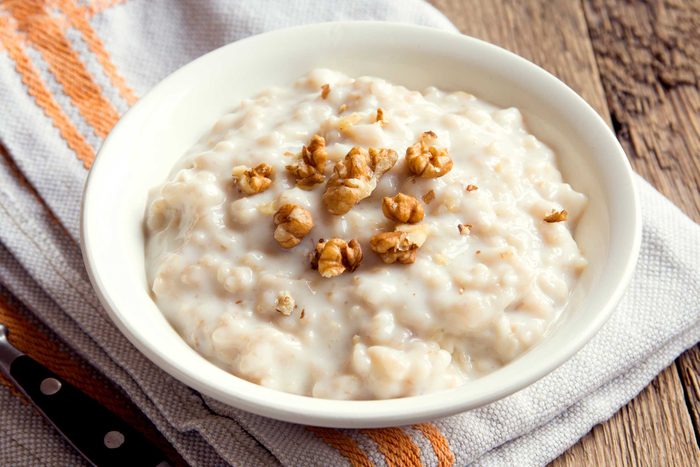
Oatmeal
Here’s how to prevent stroke by lowering your “bad” LDL cholesterol: Warm up a steaming bowl of oatmeal! A study, published in 2019 in Scientific Reports, shows that eating oatmeal lowers the risk of cardiovascular disease such as stroke. Participants who consumed oats had lower levels of LDL and triglycerides, a lower ratio of total cholesterol to HDL (good) cholesterol, and lower levels of inflammatory markers. If you have multiple risks for cardiovascular disease, aim to get your LDL cholesterol lower than 100 mg/dl. And try to get 20 grams of soluble fiber a day to get your cholesterol in check. Start your day right with a 3/4-cup serving of oatmeal, but skip the instant and instead choose steel-cut oats which packs in almost 30 percent of your daily recommended soluble fiber.
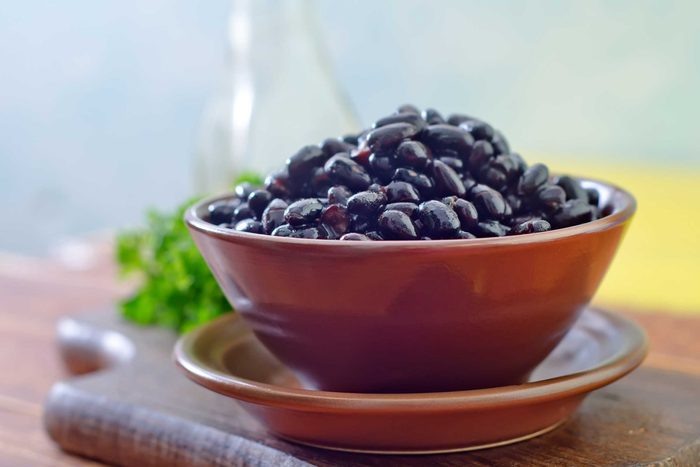
Black beans
Make a major dent in your daily fiber goals by dishing out black beans for lunch. A review of studies published in Public Health Nutrition shows that a diet rich in legumes like black beans was associated with a lower risk for cardiovascular disease. Researchers attribute the findings to legumes’ intrinsically good-for-you characteristics and the fact that they are often a substitute for unhealthy sources of protein. Add 3/4 cup black beans to a salad, bowl of stew, or a reheated black bean burrito, and you’ll already be 27 percent of the way to meeting your daily recommendation.
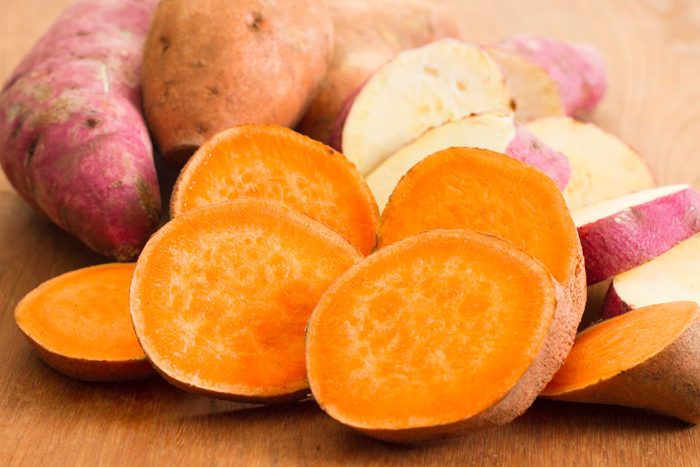
Sweet potatoes
Sweet potatoes are one of your best bets for a heart-healthy side dish at dinner. One cup of baked sweet potato with skin has a whopping 769 percent of the recommended daily allowance of vitamin A, which helps the heart, lungs, and kidneys function properly; and 26 percent of the recommended daily allowance of fiber. Plus, sweet potatoes are full of antioxidants to help prevent plaque buildup in blood vessels.
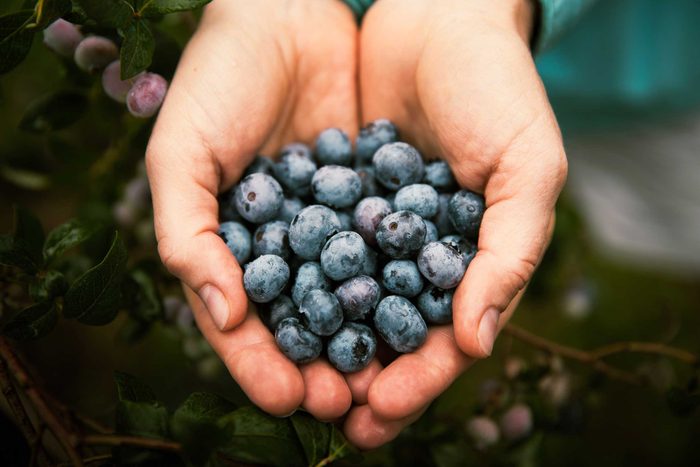
Blueberries
Antioxidants help blood vessels widen to keep your blood flow strong while reducing inflammation. So it’s no surprise that a study published in the journal Antioxidants suggests that antioxidant-rich foods like blueberries, strawberries, and blackberries have the power to lower the risk of a second heart attack or stroke. Aiming for seven to ten servings of fruits and veggies every day will also help stave off stroke risk. A cup of blueberries counts as two servings toward your goal.
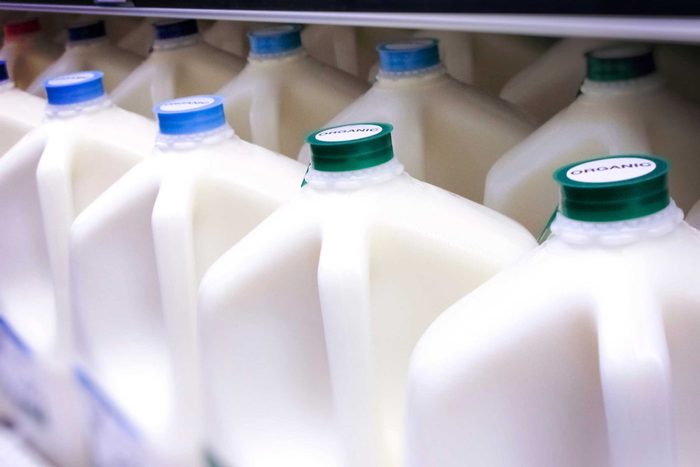
Low-fat milk
Sometimes dairy gets a bad rap. A review of studies published in the Journal of the American Heart Association found that people who consume higher amounts of dairy—specifically milk and cheese products—have a lower risk of stroke. Dairy products are loaded with calcium, magnesium, and potassium. Those nutrients all can help lower blood pressure, so aim to get two or three servings a day. Just make sure it’s low-fat or fat-free to cut down on the saturated fat that’s linked with cardiovascular disease.
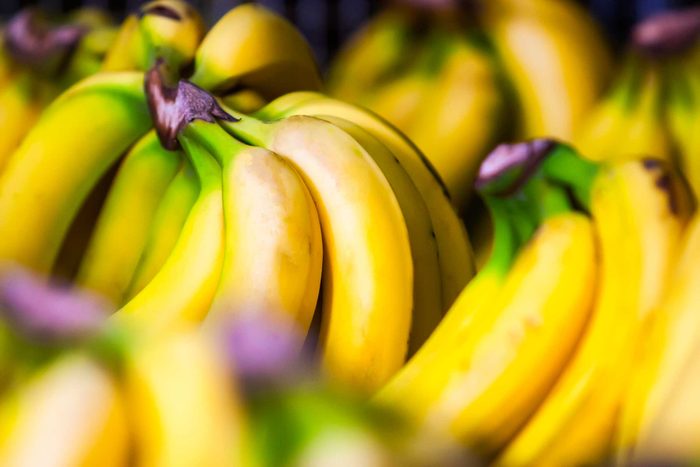
Bananas
Eating more potassium can actually lower blood pressure, even in people with hypertension. A study published in the journal Stroke found that potassium plays an important role in preventing strokes. Aim for 4,700 milligrams a day—a banana packs in 422 milligrams. Green bananas in particular can help reduce blood pressure, says Michelle Routhenstein, a preventive cardiology dietitian in New York City. “Green unripe bananas contain resistant starch, which…improves insulin sensitivity,” she says. “Insulin sensitivity improves blood sugar control, which can help assist with optimizing blood flow and reducing blood pressure.”
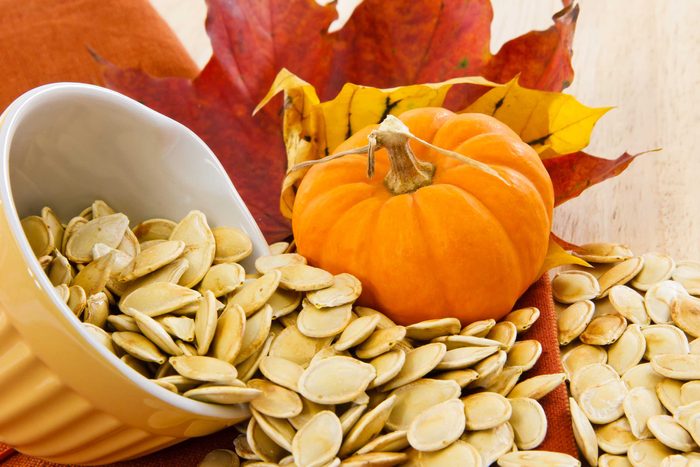
Pumpkin seeds
Another study published in Stroke analyzed data from more than 36,000 people and found that eating magnesium-rich foods can reduce stroke risk by about 20 percent. Just 1/4 cup of pumpkin seeds will get you about 42 percent of the way to your 420-milligram daily recommendation, says the American Heart Association. Pumpkin itself has great health benefits too. If pumpkin seeds aren’t your thing, barley, buckwheat, spinach, and black beans are other excellent sources of magnesium. (Check out these 10 signs you’re not getting enough magnesium.)
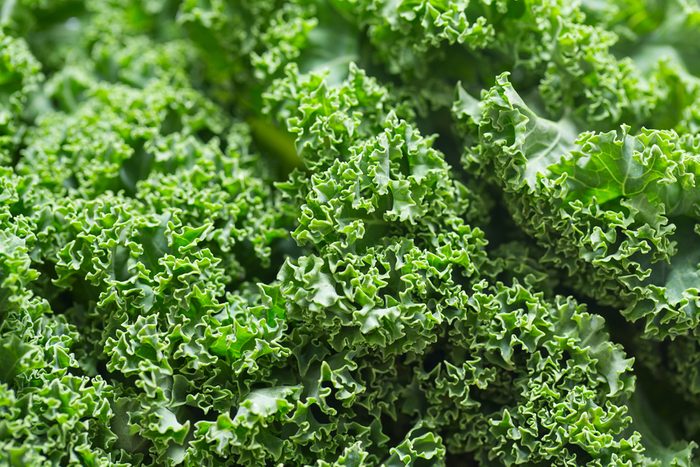
Kale
Kale and Swiss chard are packed with magnesium, so eating them can help keep your heart healthy. “Magnesium acts as a vasodilator, opening up blood vessels, and protects the endothelium, the innermost layer of blood vessel walls,” says Carolyn Dean, MD, medical advisory board member at the Nutritional Magnesium Association and author of The Magnesium Miracle. “Magnesium also closes the calcium channel to excessive calcium influx, which is toxic and damaging to arteries and blood vessels.”
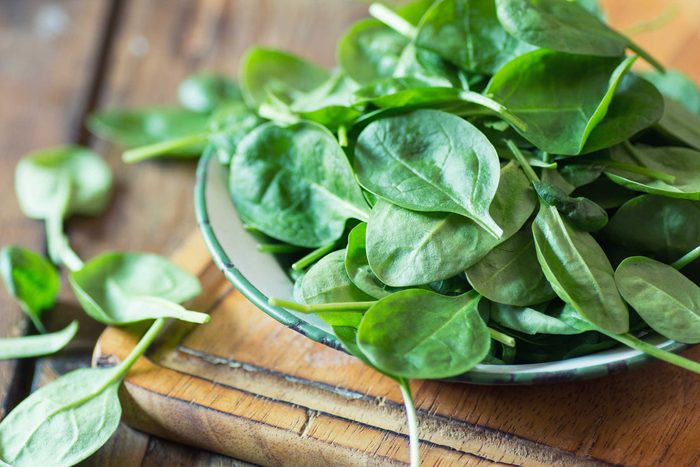
Spinach
In addition to being packed with magnesium, spinach is loaded with the B vitamin folate. A diet rich in folic acid can lower the risk of stroke in people with high blood pressure, according to a study published in JAMA. Try to get at least 400 micrograms of folate every day. Add a half-cup of cooked spinach to your morning omelet to get you a quarter of the way there.
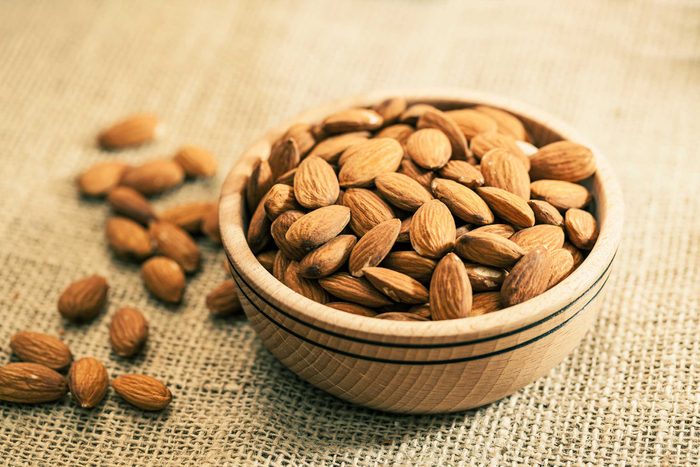
Almonds
There’s a reason why the American Heart Association includes nuts on its list of superfoods. Nuts provide protein, fiber, and unsaturated fats. In just one serving, you’ll fuel your body with nine grams of monounsaturated fat to cut down LDL (bad) cholesterol while upping HDL (the good kind). Almonds are also a great source of vitamin E, which could stop plaque from building up in your arteries. Including almonds, here are the 5 healthiest nuts you can eat.
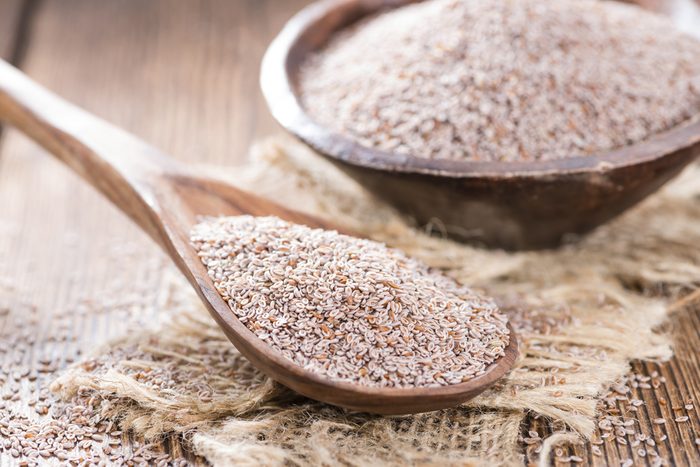
Psyllium husk
Psyllium is a type of fiber made from the seeds of the Plantago ovata herb. Its husks, often sold in the form of powder or capsules, have become a popular dietary supplement thanks to a hefty dose of soluble fiber. That’s the kind of fiber that “binds to bad cholesterol and bile acids in the intestine and promotes their excretion,” says Routhenstein. “This can reduce plaque formation, which helps reduce the risk of stroke.” She recommends one to two tablespoons of psyllium per day.
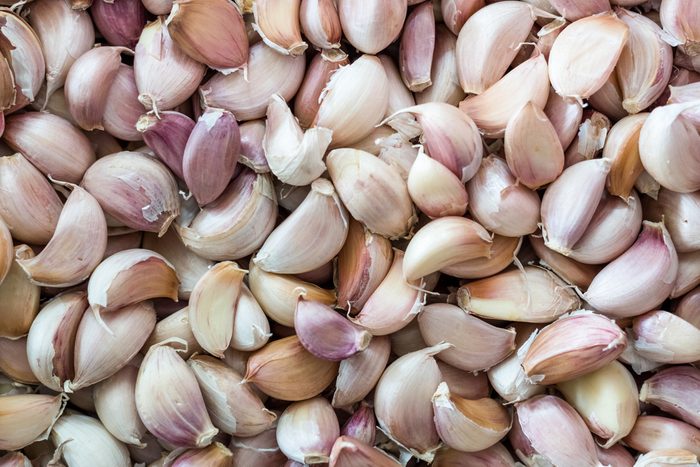
Garlic
“Garlic contains ajoene molecules that decrease platelet aggregation, which is excessive blood clumping that can cause blood clots and lead to stroke,” says Routhenstein. Raw garlic is particularly effective. Routhenstein recommends consuming about one or two garlic cloves a day. Snacking on hummus or tzatziki dip, therefore, can be yummy ways to help prevent stroke.
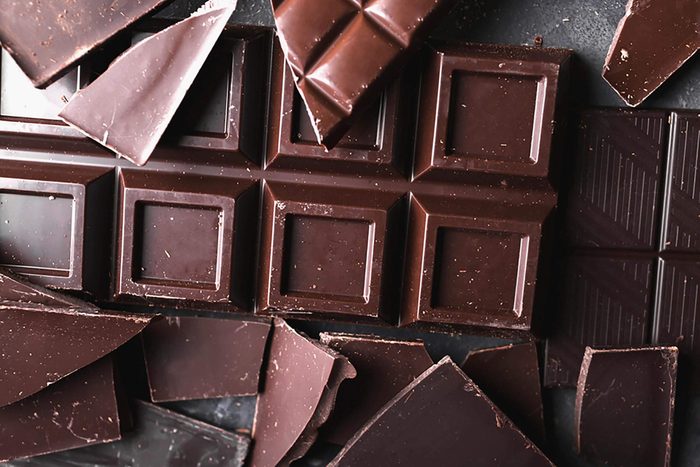
Dark chocolate
While milk chocolate is high in sugar and fats, the high amount of cacao in dark chocolate has been found to have some powerful stroke-fighting benefits. The secret is flavonoids. A study published in the journal Nutrients found that participants who ate three servings of chocolate per week saw a drop in stroke risk compared with people who didn’t eat any. Before you raid your chocolate stash, though, know that the study also found that, for people who ate more than three servings, there was no significant change in stroke risk.
Next up: Learn 30 ways to reduce your risk of stroke and heart attack.